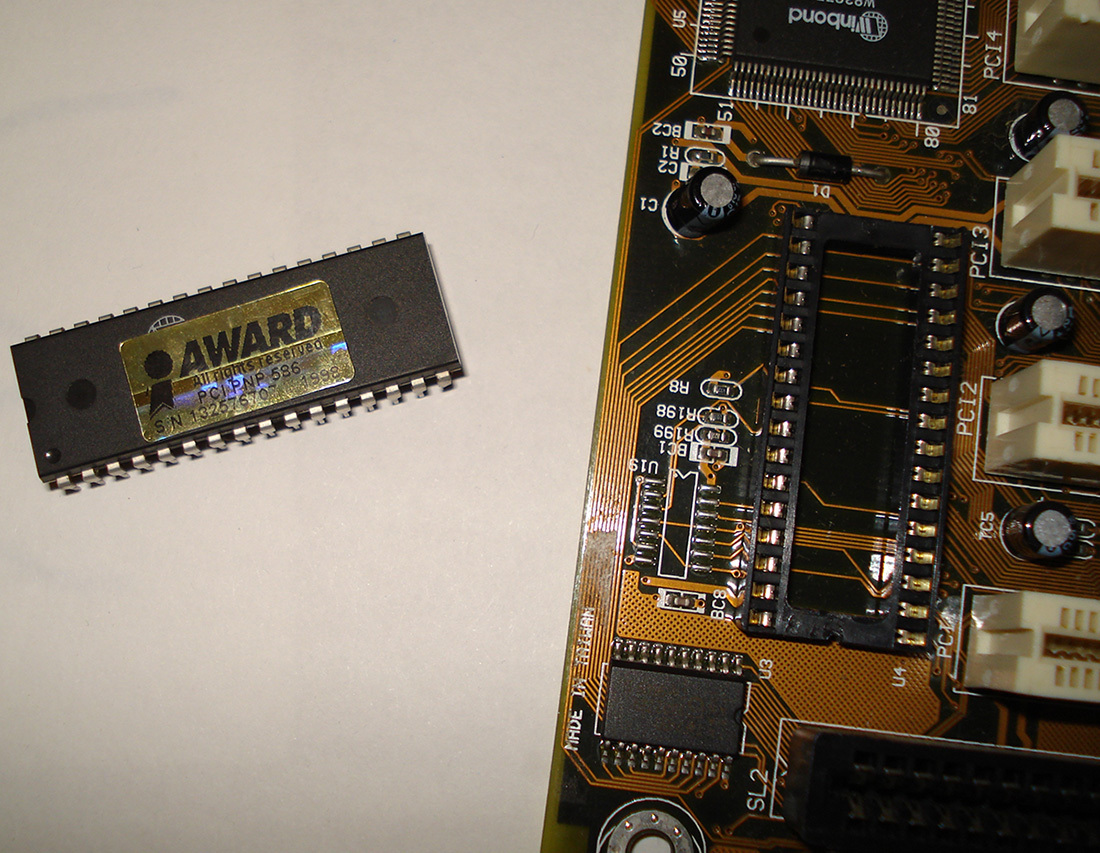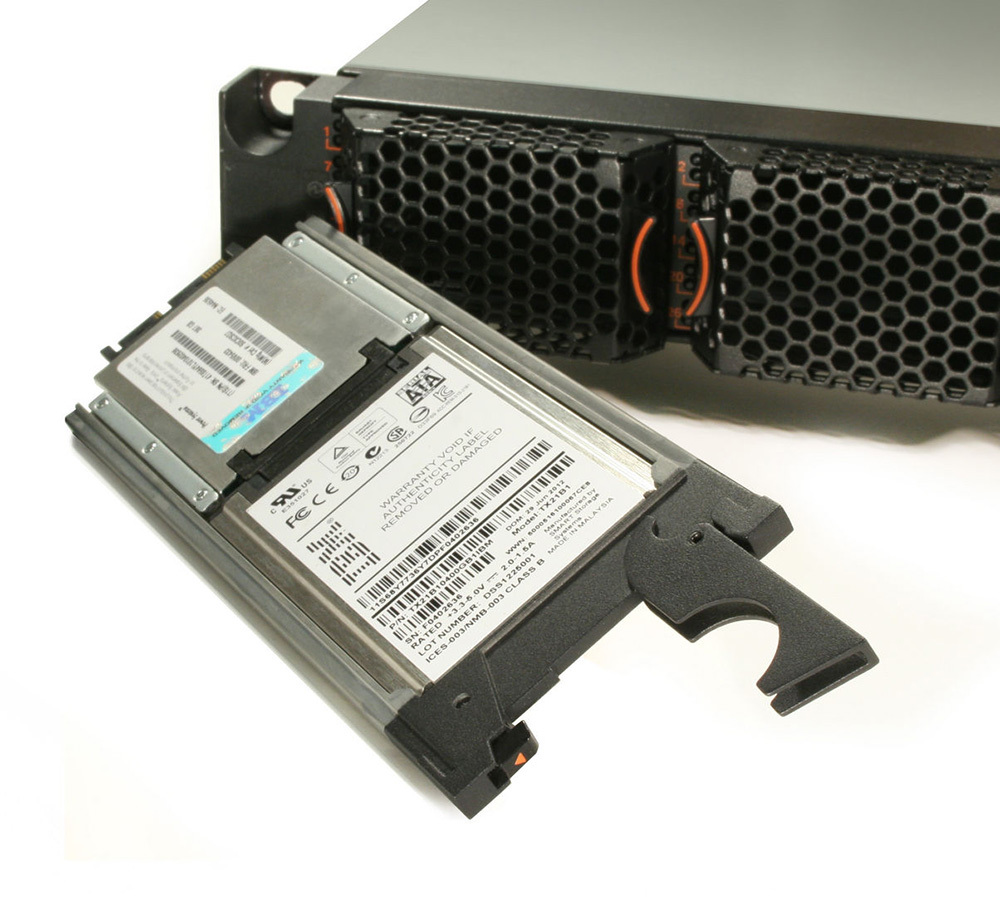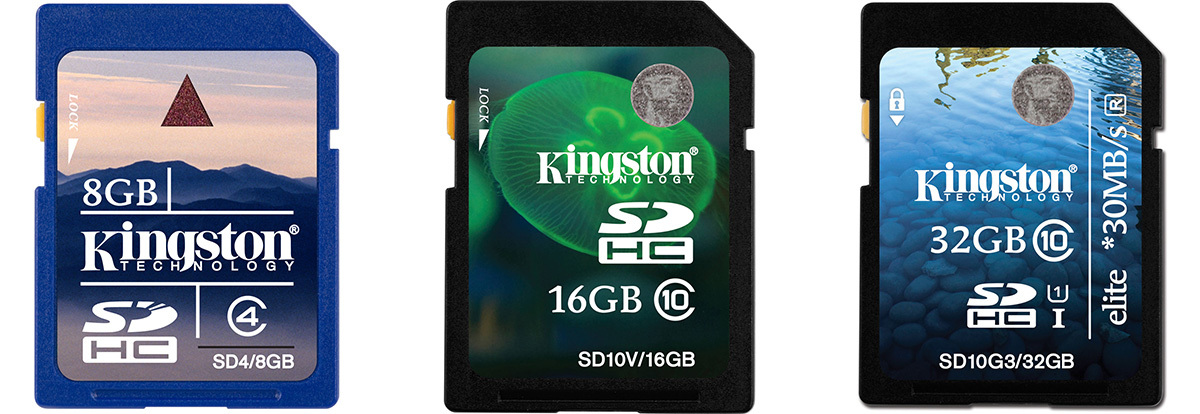The history of flash memory
Hi, Giktayms! All of us, to one degree or another, use digital technology, but far from each of us thinks about how this technology works this way and not otherwise. In this article I will talk about an integral part of almost any device - about flash memory. This component is used wherever possible: we are faced with flash memory hundreds of times a day, without knowing it themselves. Flash memory is used in portable gadgets (laptops, smartphones, players, watches), and in stationary electronics (TVs, PCs, monitors, and even washing machines). But if you ask an ordinary person about flash memory, the first thing he will call the most obvious things: SD and microSD memory cards, flash drives and things like that. In fact, it is a competitor to traditional hard drives (HDD), and full-fledged solid-state drives based on it (SSD) appeared relatively recently - in the second half of the 90s (and even before the end of the 2000s they were replaced by the above-mentioned hard drives only on magnetic plates, and the massive popularity of SSDs was acquired at all, only in 2012.

Habr's old-timers will surely remember the cognitive material about the birth of SSD and flash memory. But if the "hardcore" were invented at the turn of the century, the usual flash memory was born much earlier than many of you would have thought. Back in the mid-20th century, in one of the divisions of the American Bosch Arma company, the ballistic scientist Wen Qing Chow set out to improve the memory blocks of the coordinates of the onboard computer of the Atlas E / F missile system. But even then, the technology that came into being remained secret for several years, since the organization worked for the US government, and the existence of the Atlas system was not widely publicized. But a little time passed, and most of the company's developments were declassified, and with it the technology developed by Weng Tsing Chou - it was called PROM (programmable read only memory).
')

The principle of operation of the PROM was quite simple: the memory was a coordinate grid, at the nodes (intersections) of which the conductors were closed with a special jumper. At that moment when it was necessary to determine the state (value) of a cell with certain coordinates, it was enough to find out if there is a current at the intersection of the necessary conductors.

So, a start was made. But the disadvantage of the new invention was too small capacity. However, EPROM had some advantages - high speed and resistance to mechanical damage.
The next major advance in the development of flash memory was made by Dow Froman of Intel. Studying the damage of failed microcircuits, he invented a new standard of EPROM memory. The novelty used a special movement of electrons around the chip to store information, and powerful UV radiation was used to erase data. EPROM memory can be found in BIOS chips on computers of the beginning of the IT era, for example, on the ZX Spectrum , popular in those years in the West, better known in the CIS as Search or Magic.

The guys from Intel decided not to stop there, and in 1978, on behalf of engineer George Perlegos, the company introduced the Intel 2816 chip, similar in performance to EPROM, but thanks to a thin layer of insulation, the 2816th could erase information without the help of ultraviolet rays. This architecture was named EEPROM (Electrically Erasable Programmable Read-only Memory). But she had one very significant problem: because of the difficulties in implementing the correct supply of current to such a thin dielectric layer, the EEPROM was deprived of the possibility of rewriting (in other words, it was “disposable”).

As a result, the developers decided to create two types of microcircuits based on EEPROM: the first of them had a large capacity, but could not be overwritten, and the second was rewritable, but contained less information.

The solution to this problem was found by engineer Fujio Masuoka from Toshiba. His colleague, the process of erasing data seemed like a flash - it was the name of flash-memory. The innovation was presented to the public in 1984, in 1988, Intel introduced the first commercial NOR-flash memory samples, and in 1989 Toshiba announced our familiar NAND memory.

Information storage chips, called Single-Level-Cell (SLC) . Along with SLC, alternative chips appeared that hold 2 bits of information - Multi-Level-Cell . MLC chips were cheaper to manufacture, but they worked slowly and were short-lived. In recent years, an eMLC-memory (Enterprise Class MLC) has emerged , able to oppose MLC-chips with higher read and write speeds, as well as an extended lifespan. In terms of price / quality ratio, modern eMLC options are only slightly inferior to SLC, but they are twice as cheap. If you remember, last year we talked in detail about the device chips.
But back to the flash memory itself. Its operation is impossible without service chips responsible for managing the storage of information on NAND chips. These service chips called FSP (Flash Storage Processor). Modern FSPs have a large computing power: they consist of two cores, have the ability to advanced data protection and control the processes of finding and destroying digital "garbage". Such multifunctional chips have rather long development periods, and the chips currently being developed will be used in production only in 2-3 years (as, for example, in many modern SSDs). By the way, SSD-drives are the most interesting direction for manufacturers of devices based on flash memory. The reasons are quite obvious: it is a combination of large capacity in combination with an unusually high speed. Solid-state drives increase their volume literally every year, and if just a couple of years ago the average SSD’s capacity could be 128-256 GB, now this figure is close to a terabyte.
If we talk about the degree of development of certain options for the use of flash memory, then the SSD drives already have a planned path of development and quickly reach perfect characteristics. Much more interesting is the situation with memory cards: although they are not “lagging behind”, the potential for increasing the speed and capacity in them is more impressive. To understand why this is so, let us tell about the emergence of the most common formats of removable flash drives.
It was 1999, when SanDisk, Toshiba and Matsushita (now known as Panasonic) co-operated and decided to create a new single standard memory card, called SD, or Secure Digital. It was on the word Secure (secure) that the main emphasis was placed on the name of the new standard - the cards received DRM support or, more simply, with their appearance, digital copyright protection became possible. Already in the first year of their existence, the merger of the three companies mentioned above, they created the SD Association, in which, one by one, new members were drawn up, including such giants as Intel, Kingston, Apple, AMD, Canon, Nikon, Samsung, Hewlett- Packard and many others. The maximum capacity of the first models of SD-cards was equal to only 2 GB, but very soon there were options for 4 GB, even though they were hard to find on sale.

At first, this size was quite enough, but the digital industry did not stand still, the content volumes grew by leaps and bounds, and at some point, users began to feel a clear lack of free space. Therefore, in 2006, the second generation of SD drives was introduced, called SDHC (Secure Digital High Capacity, or SD cards with high capacity); their maximum volume increased to 32GB. This format had only one serious drawback - the lack of backward compatibility, that is, they were “not friends” with old card readers. But again, as time went on, user requests grew, and increased the need for larger capacity drives. Thus, SD-cards of version 3.01 appeared, or SDXC - Secure Digital eXtended Capacity. The novelty is relevant to this day, and boasts a nominally possible volume of 2 terabytes, which certainly will last for a long time.

In the 2000s, following the rapid development of mobile technology, the need for more memory came. By analogy with the computer world, microSD cards have been used in mobile gadgets and other portable devices (from GPS navigators to headphones). This format is popular today, and its characteristics with 4 times smaller physical size than SD-drives, no worse than those of adult memory cards. Also, drawing parallels with SD cards, there are microSDHC- and microSDXC-formats, offering similar amounts of enclosing information.

At the dawn of the mobile era, quite often the following formats that were not in great demand today were encountered: Compact Flash (1994, distinguished by the highest data transfer speed at that time — up to 90 MB / s), Memory Stick (1998, the maximum volume was equal to 128 MB), Memory Stick Pro (announced in 2003, maximum volume up to 4 GB, Memory Stick Duo (2003, the first cards were half the usual MS), Memory Stick Pro Duo (2006, cards reached 32 GB), Memory Stick HG-Duo (2008, the format was the last iteration of MS Duo-cards).
The history of memory cards can not be represented in the form of direct time - this is a complicated intricate scheme. Some formats took root and began to develop, others were not needed by anyone. In the next part of the article we will talk about more exotic memory formats and the reasons for their unpopularity.
Thank you for your attention and stay with Kingston on Hiktatimes!
For more information about Kingston and HyperX products, visit the company's official website . In choosing your kit HyperX help page with visual aids .

How it all began
Habr's old-timers will surely remember the cognitive material about the birth of SSD and flash memory. But if the "hardcore" were invented at the turn of the century, the usual flash memory was born much earlier than many of you would have thought. Back in the mid-20th century, in one of the divisions of the American Bosch Arma company, the ballistic scientist Wen Qing Chow set out to improve the memory blocks of the coordinates of the onboard computer of the Atlas E / F missile system. But even then, the technology that came into being remained secret for several years, since the organization worked for the US government, and the existence of the Atlas system was not widely publicized. But a little time passed, and most of the company's developments were declassified, and with it the technology developed by Weng Tsing Chou - it was called PROM (programmable read only memory).
')

The principle of operation of the PROM was quite simple: the memory was a coordinate grid, at the nodes (intersections) of which the conductors were closed with a special jumper. At that moment when it was necessary to determine the state (value) of a cell with certain coordinates, it was enough to find out if there is a current at the intersection of the necessary conductors.

First successes
So, a start was made. But the disadvantage of the new invention was too small capacity. However, EPROM had some advantages - high speed and resistance to mechanical damage.
The next major advance in the development of flash memory was made by Dow Froman of Intel. Studying the damage of failed microcircuits, he invented a new standard of EPROM memory. The novelty used a special movement of electrons around the chip to store information, and powerful UV radiation was used to erase data. EPROM memory can be found in BIOS chips on computers of the beginning of the IT era, for example, on the ZX Spectrum , popular in those years in the West, better known in the CIS as Search or Magic.

The guys from Intel decided not to stop there, and in 1978, on behalf of engineer George Perlegos, the company introduced the Intel 2816 chip, similar in performance to EPROM, but thanks to a thin layer of insulation, the 2816th could erase information without the help of ultraviolet rays. This architecture was named EEPROM (Electrically Erasable Programmable Read-only Memory). But she had one very significant problem: because of the difficulties in implementing the correct supply of current to such a thin dielectric layer, the EEPROM was deprived of the possibility of rewriting (in other words, it was “disposable”).

As a result, the developers decided to create two types of microcircuits based on EEPROM: the first of them had a large capacity, but could not be overwritten, and the second was rewritable, but contained less information.

The solution to this problem was found by engineer Fujio Masuoka from Toshiba. His colleague, the process of erasing data seemed like a flash - it was the name of flash-memory. The innovation was presented to the public in 1984, in 1988, Intel introduced the first commercial NOR-flash memory samples, and in 1989 Toshiba announced our familiar NAND memory.

Information storage chips, called Single-Level-Cell (SLC) . Along with SLC, alternative chips appeared that hold 2 bits of information - Multi-Level-Cell . MLC chips were cheaper to manufacture, but they worked slowly and were short-lived. In recent years, an eMLC-memory (Enterprise Class MLC) has emerged , able to oppose MLC-chips with higher read and write speeds, as well as an extended lifespan. In terms of price / quality ratio, modern eMLC options are only slightly inferior to SLC, but they are twice as cheap. If you remember, last year we talked in detail about the device chips.
But back to the flash memory itself. Its operation is impossible without service chips responsible for managing the storage of information on NAND chips. These service chips called FSP (Flash Storage Processor). Modern FSPs have a large computing power: they consist of two cores, have the ability to advanced data protection and control the processes of finding and destroying digital "garbage". Such multifunctional chips have rather long development periods, and the chips currently being developed will be used in production only in 2-3 years (as, for example, in many modern SSDs). By the way, SSD-drives are the most interesting direction for manufacturers of devices based on flash memory. The reasons are quite obvious: it is a combination of large capacity in combination with an unusually high speed. Solid-state drives increase their volume literally every year, and if just a couple of years ago the average SSD’s capacity could be 128-256 GB, now this figure is close to a terabyte.
If we talk about the degree of development of certain options for the use of flash memory, then the SSD drives already have a planned path of development and quickly reach perfect characteristics. Much more interesting is the situation with memory cards: although they are not “lagging behind”, the potential for increasing the speed and capacity in them is more impressive. To understand why this is so, let us tell about the emergence of the most common formats of removable flash drives.
Sd card
It was 1999, when SanDisk, Toshiba and Matsushita (now known as Panasonic) co-operated and decided to create a new single standard memory card, called SD, or Secure Digital. It was on the word Secure (secure) that the main emphasis was placed on the name of the new standard - the cards received DRM support or, more simply, with their appearance, digital copyright protection became possible. Already in the first year of their existence, the merger of the three companies mentioned above, they created the SD Association, in which, one by one, new members were drawn up, including such giants as Intel, Kingston, Apple, AMD, Canon, Nikon, Samsung, Hewlett- Packard and many others. The maximum capacity of the first models of SD-cards was equal to only 2 GB, but very soon there were options for 4 GB, even though they were hard to find on sale.

At first, this size was quite enough, but the digital industry did not stand still, the content volumes grew by leaps and bounds, and at some point, users began to feel a clear lack of free space. Therefore, in 2006, the second generation of SD drives was introduced, called SDHC (Secure Digital High Capacity, or SD cards with high capacity); their maximum volume increased to 32GB. This format had only one serious drawback - the lack of backward compatibility, that is, they were “not friends” with old card readers. But again, as time went on, user requests grew, and increased the need for larger capacity drives. Thus, SD-cards of version 3.01 appeared, or SDXC - Secure Digital eXtended Capacity. The novelty is relevant to this day, and boasts a nominally possible volume of 2 terabytes, which certainly will last for a long time.
microSD: towards the mobile element

In the 2000s, following the rapid development of mobile technology, the need for more memory came. By analogy with the computer world, microSD cards have been used in mobile gadgets and other portable devices (from GPS navigators to headphones). This format is popular today, and its characteristics with 4 times smaller physical size than SD-drives, no worse than those of adult memory cards. Also, drawing parallels with SD cards, there are microSDHC- and microSDXC-formats, offering similar amounts of enclosing information.

At the dawn of the mobile era, quite often the following formats that were not in great demand today were encountered: Compact Flash (1994, distinguished by the highest data transfer speed at that time — up to 90 MB / s), Memory Stick (1998, the maximum volume was equal to 128 MB), Memory Stick Pro (announced in 2003, maximum volume up to 4 GB, Memory Stick Duo (2003, the first cards were half the usual MS), Memory Stick Pro Duo (2006, cards reached 32 GB), Memory Stick HG-Duo (2008, the format was the last iteration of MS Duo-cards).
To be continued
The history of memory cards can not be represented in the form of direct time - this is a complicated intricate scheme. Some formats took root and began to develop, others were not needed by anyone. In the next part of the article we will talk about more exotic memory formats and the reasons for their unpopularity.
Thank you for your attention and stay with Kingston on Hiktatimes!
For more information about Kingston and HyperX products, visit the company's official website . In choosing your kit HyperX help page with visual aids .
Our previous posts:
- HyperX Impact memory lines - mobile - does not mean slow
- HyperX DDR3 memory rulers - what is what in the model range?
- HyperX DDR4 memory rulers - what to choose for your computer?
- USB drive HyperX Savage USB 3.1 Gen 1 with a capacity of 128 gigabytes
- Interesting facts from the history of solid-state drives
Source: https://habr.com/ru/post/391367/
All Articles